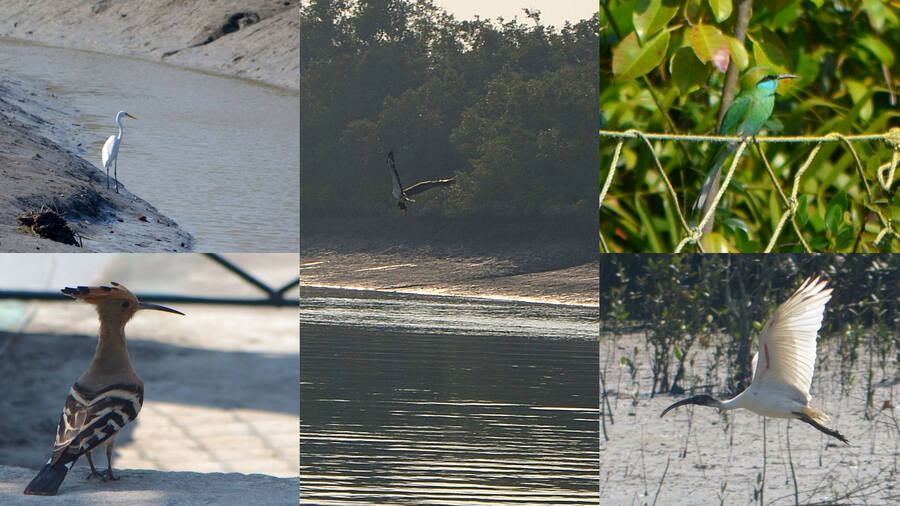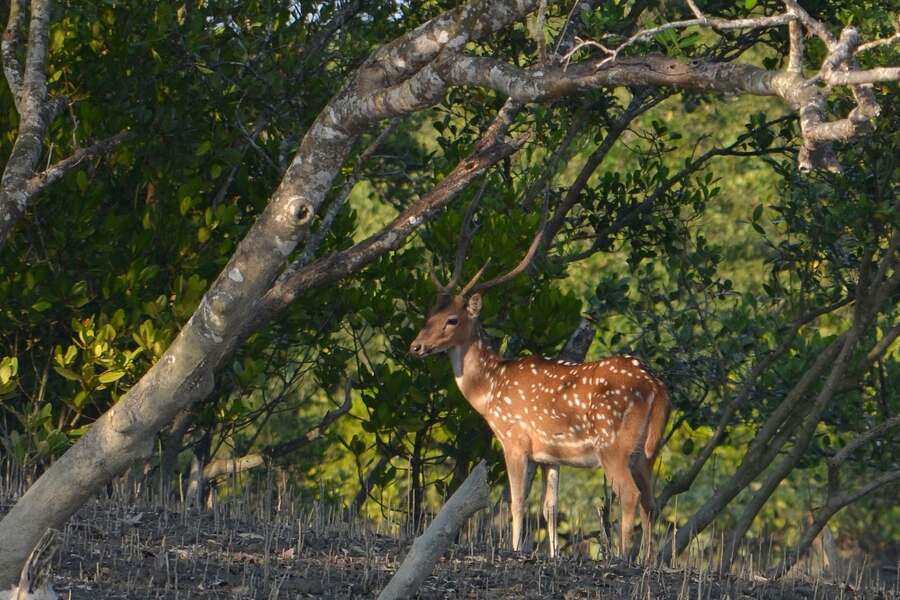

Jharkhali jetty, where ferries depart for a tour of the Sunderbans. The meandering waterway is a confluence of many smaller rivers
Rumela Basu
Boats are the most common transport for locals living in the villages bordering the forests. Along with the wondrous natural sights, the journey is interspersed with everyday scenes like fishermen’s boats bobbing on the Herobhanga and families making their way to the jetty
Rumela Basu
The approximately 10,000 square kilometre national park sits on the Ganges delta and is a natural World Heritage Site shared by India and Bangladesh. Named for the abundant sundari trees that grow in this primarily mangrove forest, the park is the home of the Bengal tiger. Recent estimates suggest there are about 96 tigers in the reserve
Rumela Basu
With settlements close to the forests, human-animal conflict is a part of life in the Sunderbans. Tiger attacks are not an uncommon occurrence and locations where attacks have occurred are marked with a clearly visible cloth, usually a ‘shaada lal paar’ sari tied to a tree
Rumela Basu
Mythology and legends have often helped protect forests and their inhabitants from destruction by humans and the Sunderbans has its own stories too. Bon Bibi, the mother goddess of the forests and Bagh Debata, the tiger god, are worshipped by locals of all faiths. Small and big temples, including this one at the Netidhopani jetty, dot the landscape
Rumela Basu
The Netidhopani jetty, a gateway to the forest’s core area, is a well-constructed site for visitors to disembark. A watchtower offers a view of the jungle’s only potable watering hole, and a small park with statues and information boards highlight the rich flora and fauna, including showing the hunting style of a tiger in the Sunderbans
Rumela Basu
The riverine forest is a bird-watchers’ paradise. Its avian population includes storks (top left), Asian green bee-eaters (top right), crested hoopoe (bottom left), black-headed ibis (bottom right) and fishing eagles (centre), among many others
Rumela Basu
While the lure of the striped beast is what takes most travellers to the Sunderbans, the serene yet formidable beauty of the mangrove forest with its skeleton trees, breathing roots and abundant wildlife is what keeps them returning
Rumela Basu
One of the prettiest inhabitants of the Sunderbans is the native chital or spotted deer. Outside of an encounter with the tiger, perhaps one of the most picturesque sights is a tawny stag’s spotted coat in the dappled evening light
Rumela Basu
Dusk makes the blue-green waters of the Sunderbans’ rivers gleam golden and many fisherfolk make their way home before evening sets in with their boats’ sails fluttering in the cool breeze — a feature of all seasons on the water
Rumela Basu
Even if the closest tiger encounter one has is spotting fresh pug marks, a boat safari is a must. As the light changes from mellow to squint-inducing to warm as the day passes, the forest reveals its pristine beauty — that goes beyond the call of one mighty beast
Rumela Basu